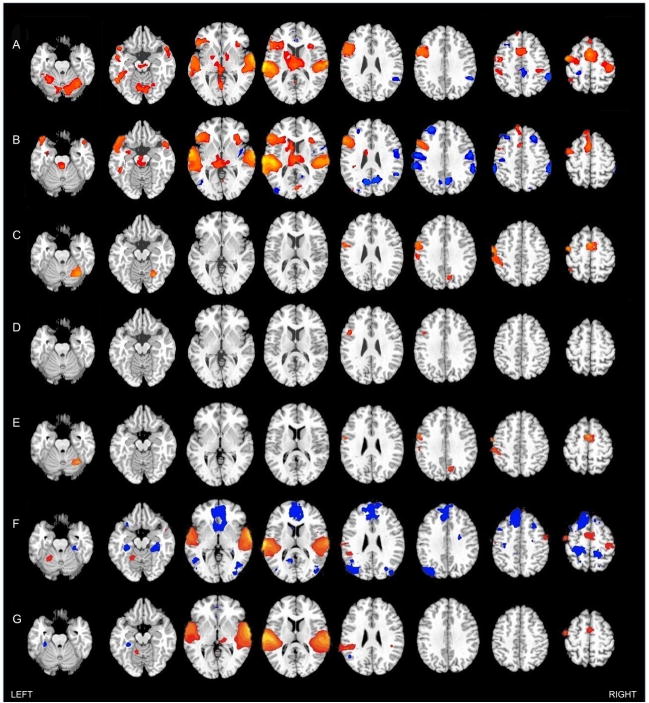Figure 1.
Significant clusters of activation effects for the contrast lexical-semantic decision vs. reverse speech within the (A) adult group, (B) child group. (C) Between-group effects showing greater activation in the adult compared to the child group. (D) Significant clusters of between-group effects (adults > children) for the contrast of semantically incongruous vs. congruous trials. No inverse effects (children > adults) were detected for either between-group analysis (C & D). (E) Results for secondary analyses for a child subsample of the 16 children with least head movement, in comparison to full adult sample (all effects: adults > children). Significant main effects of control condition (reverse speech) compared to null baseline in adults (F), and children (G). All clusters shown are significant (p<.05; corr.). Red represents positive T-scores, blue represents negative T-scores.

